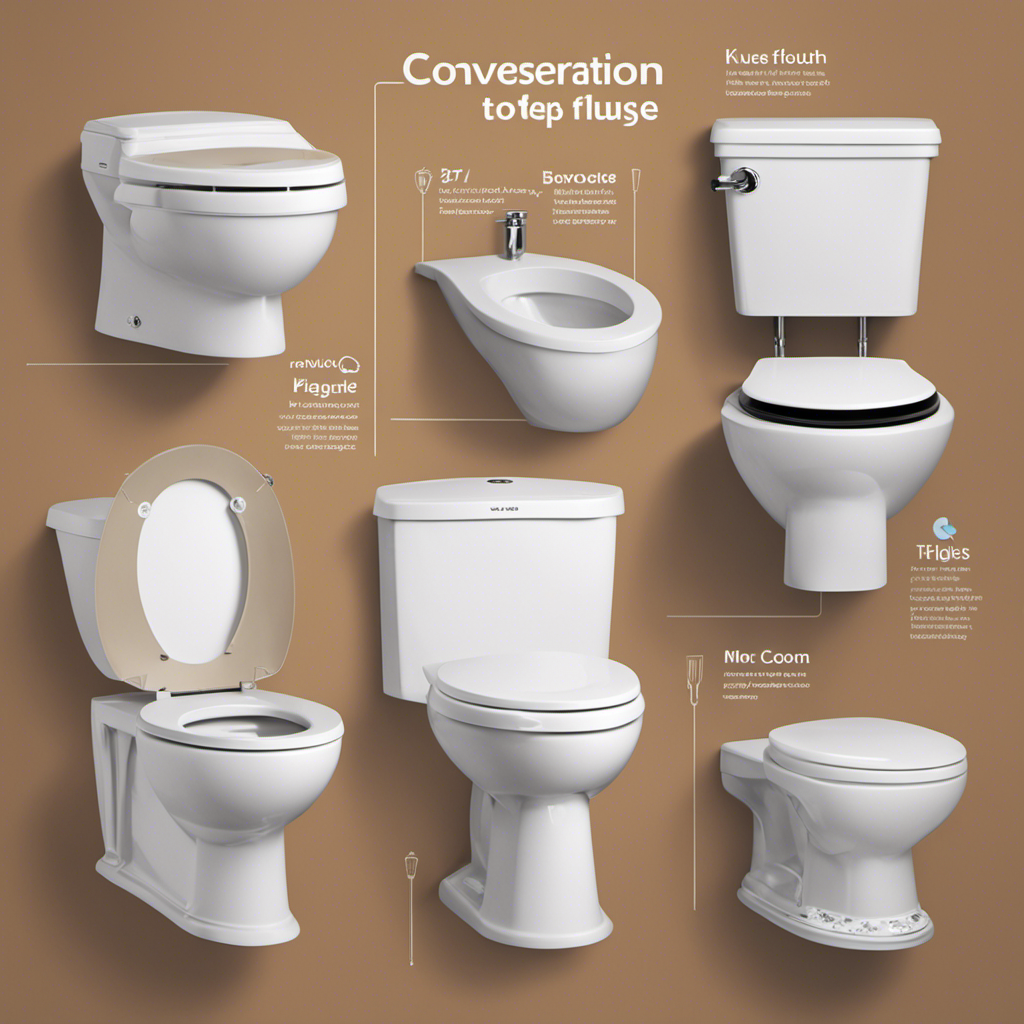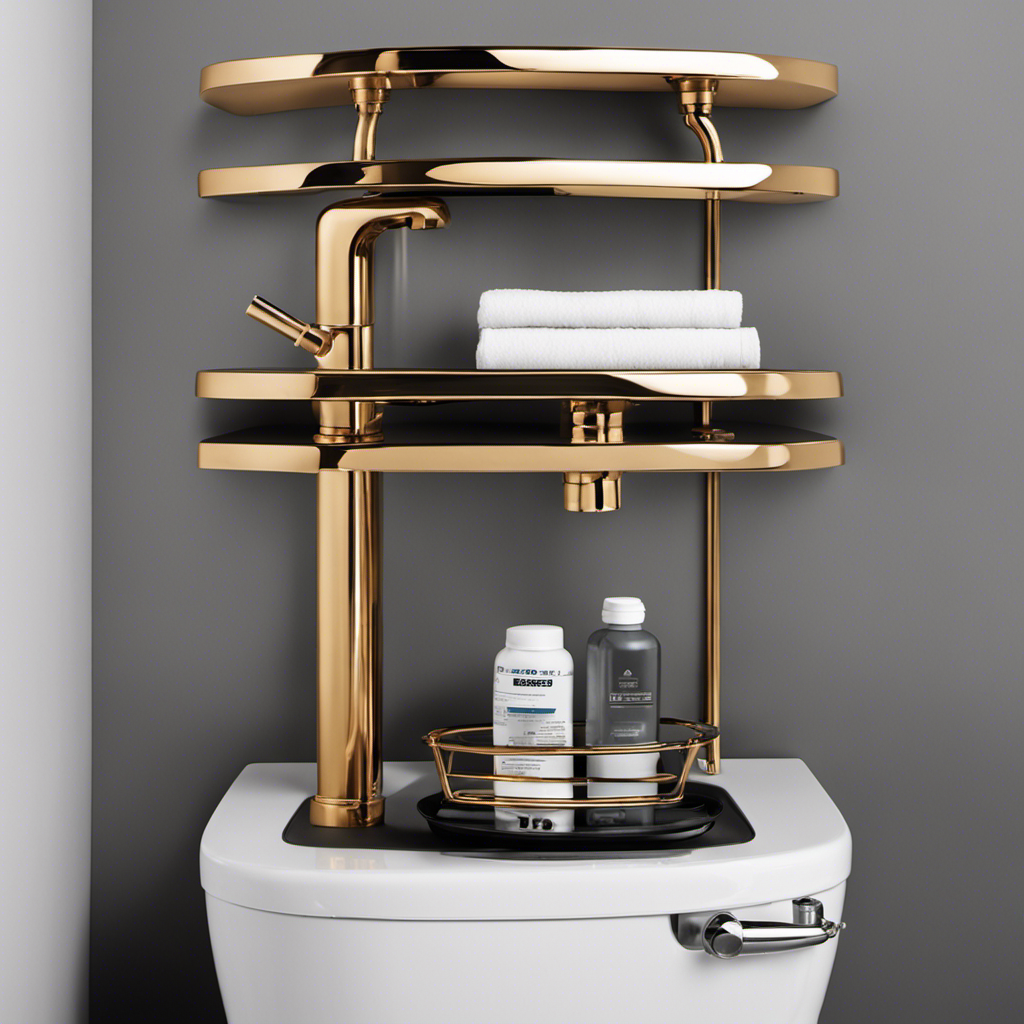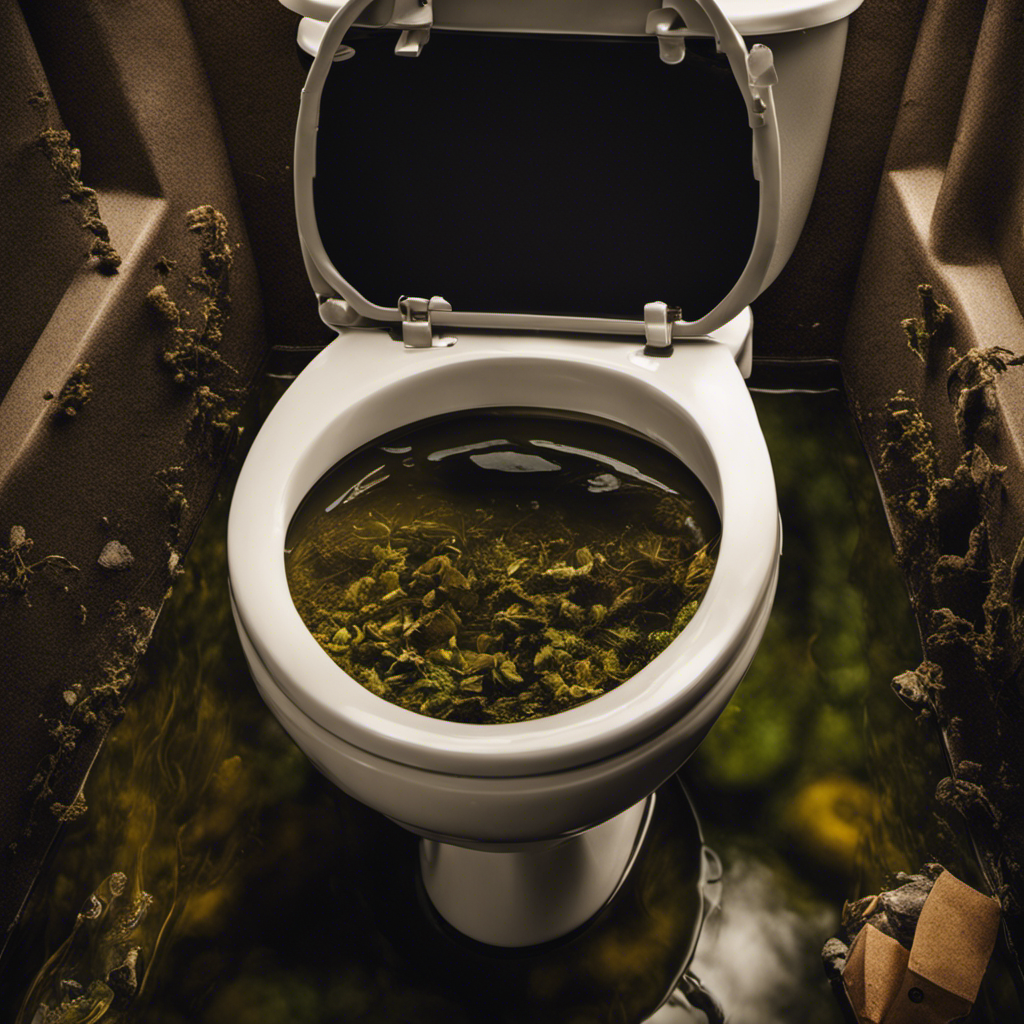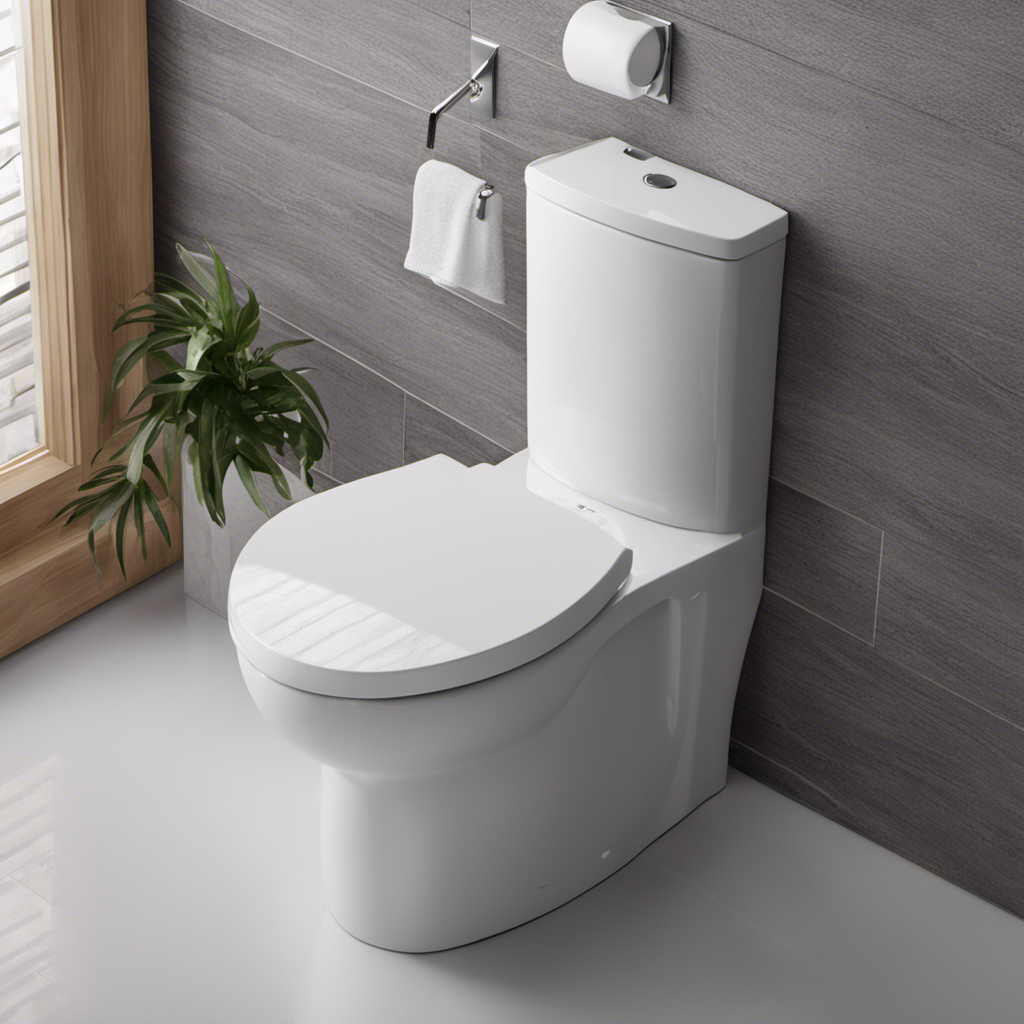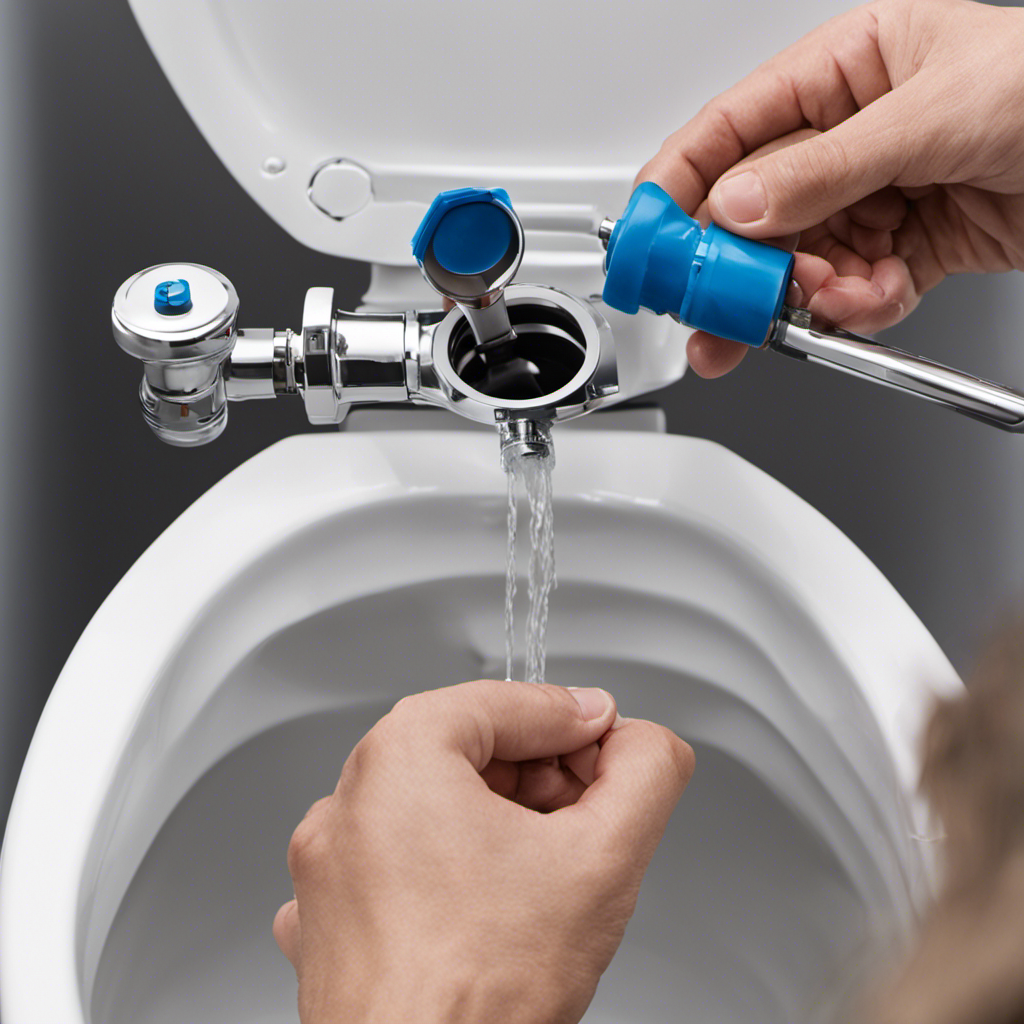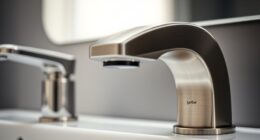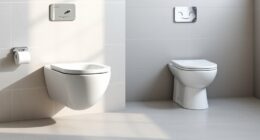I’ve always been curious about how much water toilets actually use and if there are ways to conserve it. Turns out, there are!
Understanding the factors that affect toilet water usage, like water pressure and valve type, can help us find solutions to reduce water wastage. Low flow toilets are one option, but they might not work as well in homes with high water pressure.
By regularly maintaining our toilets, investing in eco-friendly options, and checking for leaks, we can save both water and money.
Let’s dive in and explore the world of toilet water usage and conservation tips!
Key Takeaways
- Water pressure (psi) affects toilet water usage
- The type of valve in the toilet affects water usage
- Low-flush toilets use less water than full-flush toilets
- Regular maintenance and inspections help prevent water waste
Factors Affecting Toilet Water Usage
Installing a low-flow toilet may not save as much money in my home with high water pressure. The impact of toilet design on water consumption is significant. Water pressure plays a crucial role in determining how much water is used for each flush.
Low-flow toilets are designed to use less water, but in homes with high water pressure, the savings may not be as significant. It is important to consider the type of valve in the toilet as well. Pressure-assist models use more water than gravity-fed models. Older homes often have ballcocks, which waste more water compared to electronic fill valves (EFVs).
Gravity-fed models rely on gravity, requiring less water to fill the tank. To conserve toilet water, regular maintenance and inspections are necessary to prevent leaks and water waste. Additionally, investing in an eco-friendly toilet with a maximum flush of 1.6 gallons or less can help reduce water consumption.
Type of Valve
When choosing a toilet, it’s important to consider the type of valve used as it directly affects water consumption. Replacing old valves can significantly impact water usage and conservation efforts.
One crucial factor to consider is the water pressure and its impact on valves. In older homes with high water pressure, the expected water savings from a low-flow toilet may be reduced. It is essential to have a plumber or contractor check the home’s water pressure and make recommendations accordingly.
Additionally, different types of valves have varying water usage. Pressure-assist models tend to use more water than gravity-fed models. Ballcocks, commonly found in older homes, waste more water than electronic fill valves (EFVs). Gravity-fed models rely on gravity and require less water to fill the tank.
Toilet Flush Water – Where It Goes
I can see where the toilet flush water goes by observing how it flows into the bowl and travels through the holes in the bottom. Understanding the toilet flush mechanism is crucial for toilet water waste prevention.
Different types of toilets have varying water usage. Low-flush toilets use less than 1 gallon per flush, while full-flush toilets use 1.6 gallons per flush. Dual-flush toilets provide the option for full or partial flushes, further conserving water.
To conserve toilet water, regular maintenance and inspections are essential. Inspecting and replacing the flapper valve, adjusting the filler valve, and checking for leaks are effective ways to prevent water waste. Investing in an eco-friendly toilet with a maximum flush of 1.6 gallons or less can also contribute to water conservation.
Ways to Conserve Toilet Water
Regularly inspecting and replacing the flapper valve, adjusting the filler valve, and checking for leaks are effective ways to prevent unnecessary water waste in toilets. By implementing these simple maintenance tasks, you can contribute to water conservation efforts and reduce your water bill.
Here are some key benefits of these eco-friendly options and leak prevention measures:
-
Eco-friendly options:
-
Investing in an eco-friendly toilet with a maximum flush of 1.6 gallons or less can significantly reduce water usage.
-
Dual-flush toilets offer variable water usage based on load size, allowing for even greater water savings.
-
Leak prevention:
-
Regularly checking for leaks around the toilet bowl and trapway helps identify and fix any potential sources of water waste.
-
Using dye to identify invisible cracks that may cause water waste ensures thorough leak prevention.
Benefits of Water-Efficient Toilets
Investing in an eco-friendly toilet with a maximum flush of 1.6 gallons or less saves water and money. These water-efficient toilets not only contribute to cost savings but also have a positive environmental impact.
By using less water per flush, these toilets help conserve our precious water resources and reduce the strain on water treatment systems. This, in turn, helps protect our environment by reducing the energy required for water treatment and the associated carbon emissions.
Additionally, these eco-friendly toilets often come with features like dual-flush options, allowing users to choose between a full or partial flush based on the load size. This further promotes water conservation and ensures efficient usage.
Additional Considerations for Water Conservation
Maintaining a regular schedule for inspections and maintenance is crucial for maximizing water efficiency in the home. The importance of regular maintenance cannot be overstated, as it helps prevent water waste and ensures that all water-saving measures are functioning optimally.
When it comes to water conservation, there are several methods that can be employed to further reduce water usage. Here are some water conservation methods to consider:
- Regularly check for leaks around the toilet bowl and trapway.
- Inspect and replace the flapper valve if necessary.
- Adjust the filler valve to control the water level in the tank.
- Use dye to identify invisible cracks that may cause water waste.
Frequently Asked Questions
Are There Any Government Regulations Regarding Toilet Water Usage?
Yes, there are government regulations regarding toilet water usage. When installing water-efficient toilets in older homes, it’s important to comply with these regulations to ensure water conservation and efficiency.
Can Water-Efficient Toilets Be Installed in Older Homes With High Water Pressure?
Installing low flow toilets in high water pressure homes may not save as much water. Compatibility with older plumbing systems should be considered. Consulting a plumber or contractor is recommended for proper assessment and recommendations.
How Can I Determine if My Toilet Is Leaking and Wasting Water?
To determine if my toilet is leaking and wasting water, I can perform a simple toilet leak detection test. By adding dye to the tank and checking for color in the bowl, I can identify any invisible cracks or leaks.
Are There Any Incentives or Rebates Available for Installing Water-Efficient Toilets?
Yes, there are incentives and rebates available for installing water-efficient toilets. They save water and money by using less than 1.6 gallons per flush. Newer models with a maximum flush of 1.28 gallons or less are even more cost-effective.
What Are Some Other Ways to Conserve Water in the Bathroom Besides Using a Water-Efficient Toilet?
To conserve water in the bathroom, besides using a water-efficient toilet, you can install water-saving showerheads and faucet aerators. These devices reduce water flow without compromising performance, helping to save water and reduce water bills.
Conclusion
In conclusion, understanding the factors that affect toilet water usage is crucial in our mission to conserve water. By considering the type of valve in our toilets and adjusting water pressure, we can significantly reduce water wastage.
Regular maintenance and inspections are key to preventing leaks and invisible cracks that lead to water loss. Investing in water-efficient toilets and implementing simple conservation tips can make a significant impact.
So, why wait? Let’s start saving water today and ensure a sustainable future for generations to come.
